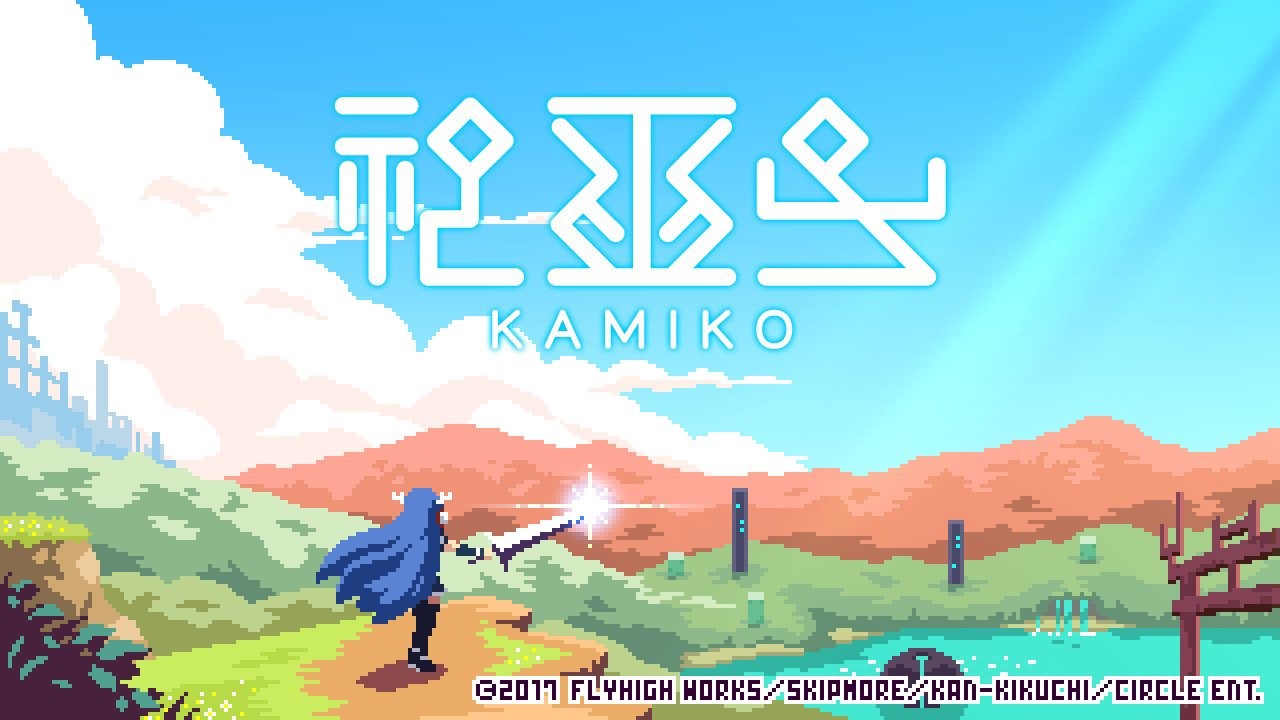Kamiko
A Bite-Sized Adventure
The younger, poorer me treasured the Wii Shop Channel. To that pimpled child without a disposable income, the channel offered a venue to spend my meager funds. Every month, I scrounged enough change for a $20 prepaid card and reveled at my purchasing options. N64 games went for $10 and WiiWare games hovered around the same price, so with a single prepaid card, I could get two whole games. Even better, if I stuck with NES and other $5 games, I could get away with a whopping four games.
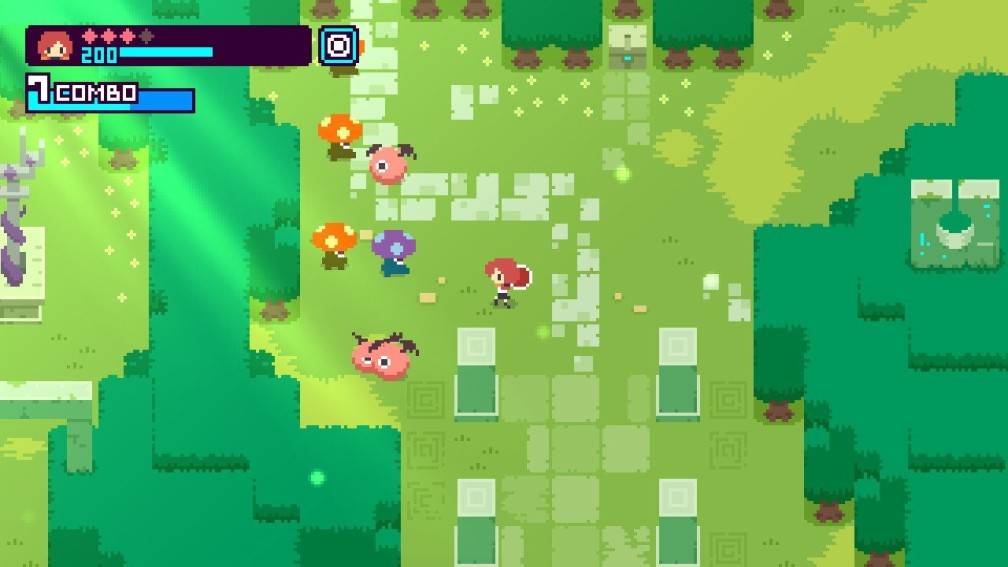
In retrospect, my younger self should’ve realized that four $5 games rarely met the content offered by two $10 games or a $20 budget retail title, but I was naive, desperate, and bored. Now that I’m old, naive, desperate, and bored, the same situation presents itself with the Switch eShop. In the eShop’s current state, $5 and cheaper games are less prevalent as they were for the Wii and Wii U, so when they do pop up, they draw attention. When Kamiko landed on the eShop, a few generally positive reviews were enough to push me to buy it. After all, I have a disposable income now and an unflagging ability to ignore how little purchases add up, so $5 was a pittance to me. To the surprise of no one (because there was no one to be surprised in the first place), I encountered about as much content in Kamiko as $5 will get you.
What is it?
The world is in danger of being overrun by demons, and the responsibility of saving everyone and taking on the mantle of “Kamiko” falls on you, a shrine maiden of three different colors (Yamato, Uzume, and Hinome). Yamato uses a sword; Uzume has her bow and arrows; and Hinome flings a shield at things because she has a Captain America fetish. Your maiden of choice is thrown into four levels, each ending with a boss. Beat them all, and you save the world. Good job.
Your maidens do not waste time with complex combos or move sets. You hold B to dash; you press A to attack; and holding Y will charge up a special attack which uses your SP. SP also cleanses shrines (four per level) and opens chests, both of which are key to progression. Levels, themselves, are pretty straightforward and generally involve fighting clusters of enemies (who yield SP), finding and transporting keys/orbs to open new sections, and defeating a three-hit boss after you’ve cleansed all the shrines. Do that for every level, and you’ll save the world. Good job.
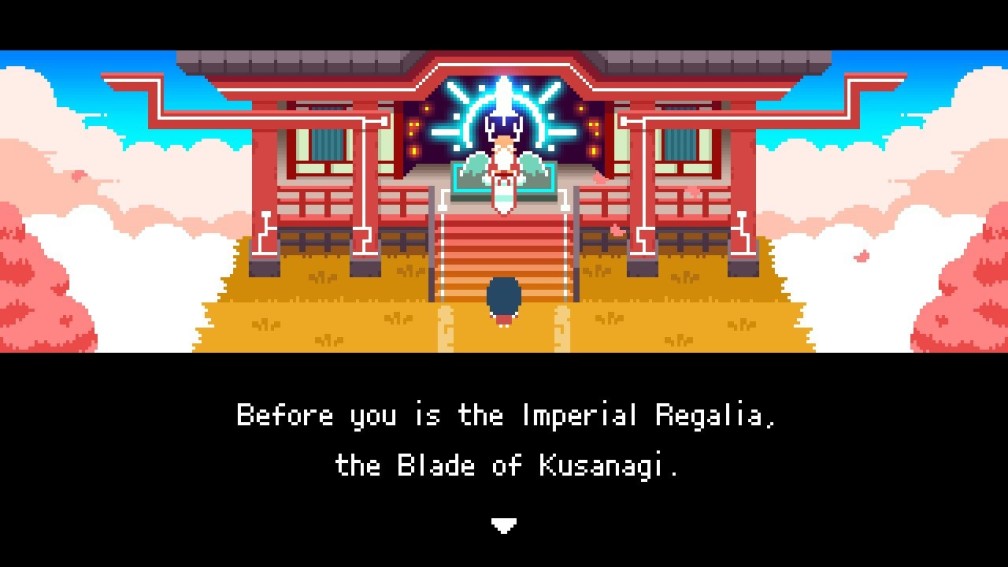
That’s about it. Each level has hidden upgrades for your health and SP. There are also special trinkets (one per stage) which can be found by pressing A on arbitrary pieces of scenery or by using a guide because someone else wasted their time for you. Play the game with each character and save the world multiple times. Good jobs.
What’s good?
- The graphics and art direction are remarkable. Despite adopting the pixel graphics currently plaguing the indie scene, Kamiko creates lush, Shinto-themed environments speckled with moss-covered buses, bubbling lava, or gorgeous lighting.
- Each character provides a different experience. They don’t change the gameplay drastically, but they do impact how you spam the Y button at clusters of enemies.
- The bosses offer a much-needed change of pace. Although they can only withstand three hits and obsessively stick to a set attack pattern, they require more than button-mashing to be felled.
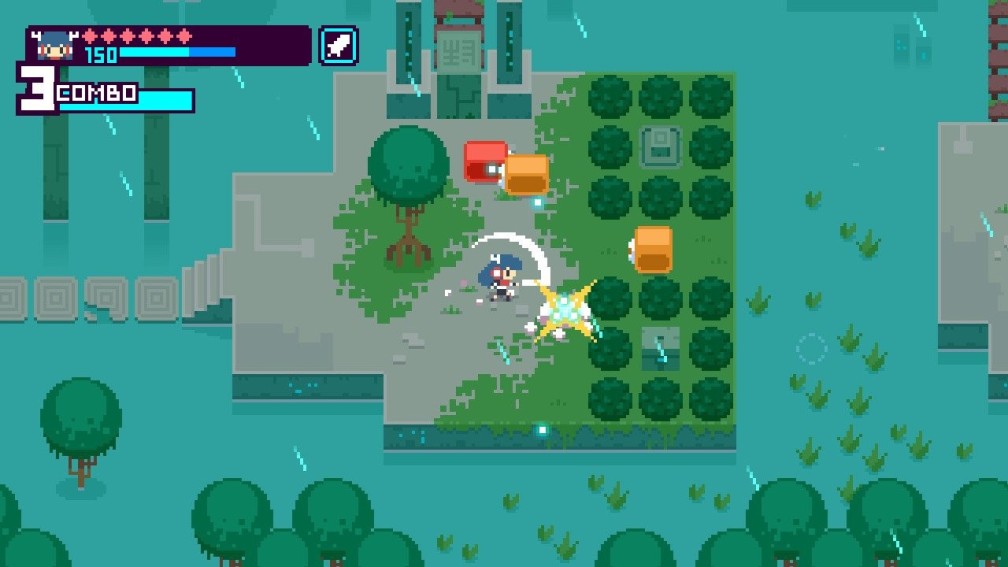
What’s bad?
- It’s short. My first run (with Yamato) took me about 48 minutes. My third and last run (with Hinome) was cut to 28 minutes. I recognize this game is designed for speedrunning, but for those of us who suck at sprints, Kamiko doesn’t have much mileage. For speedrunners, it’s disappointing that there are no in-game online leaderboards. Consequently, you’ll have to work harder to find out that you’ll never be as good as this guy.
- Saving the world grows repetitive. Combat is basic; enemies rarely pose a threat; and even bosses become tiring as you wait for them to expose their weak points. Again, speedrunners may enjoy the streamlined gameplay, but for me, I couldn’t muster enough interest to carry me through a fourth play-through for this review.
- Kamiko over-relies on fetch sections. Periodically throughout each level, you will be tasked with carrying a key or orb to Point B. While carrying an item, you can’t dash or attack, and colliding with an enemy drops your item. If this happens, you must backtrack to where you first grabbed the item to try again. This mechanic is not awful, itself, but when these sections pop up twice or thrice per level, you’ll curse your shrine maiden’s stubby little butterfingers.
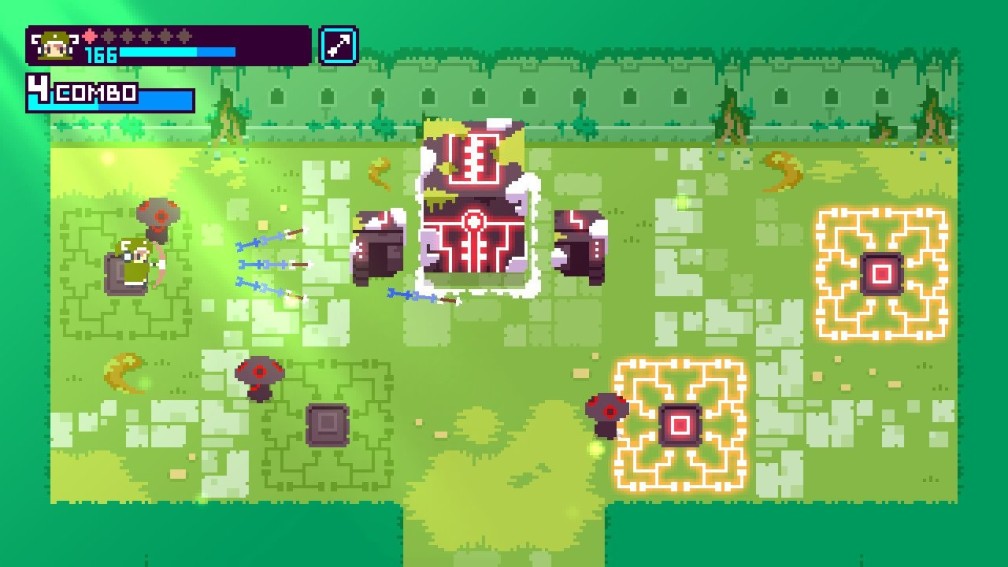
What’s the verdict?
Kamiko is a fine game, especially if you’re strapped for cash or feeling the speedrunning urge. Many reviewers point out that $5 is cheap enough to make Kamiko and its ilk easy purchases, but this line of thought usually leads to the Steam Sale mentality of buying games you’ll never play. Sure, $5 may be better spent on Kamiko than Taco Bell or a shot of vodka (or maybe not, based on the time of day), but for those of you who have some extra bucks and aren’t interested in needlessly inflating your Switch’s gaming library, the world of $10 games offers a variety of deeper, lengthier experiences.
Arbitrary Statistics:
- Score: 6
- Time Played: 3 hours
- Number of Players: 1
- Games Like It on Switch: Oceanhorn: Monster of the Uncharted Seas, Yono and the Celestial Elephants

